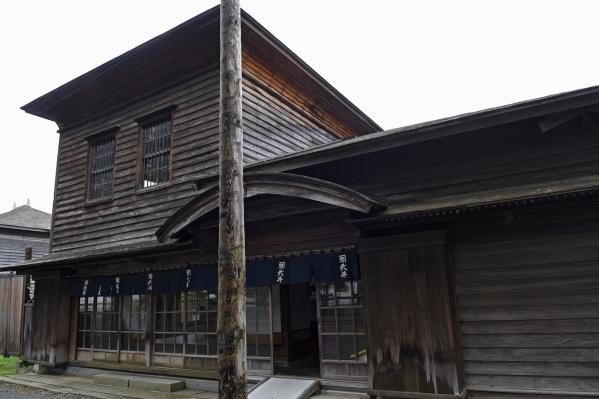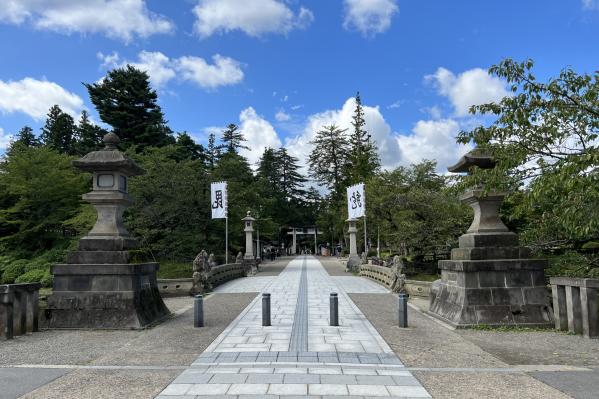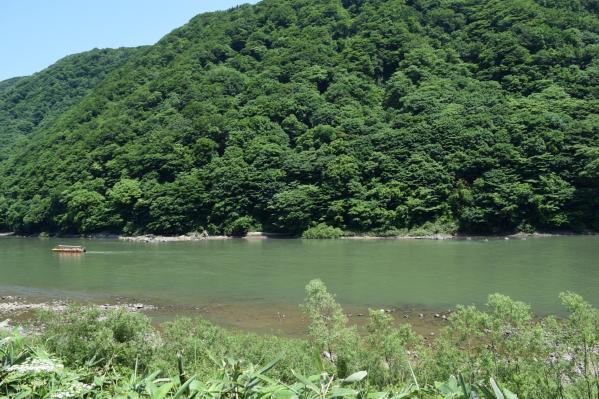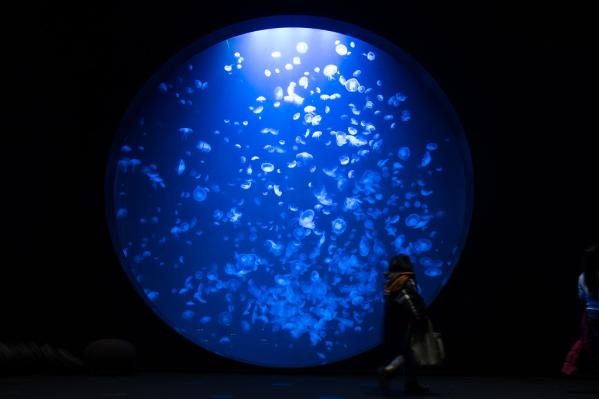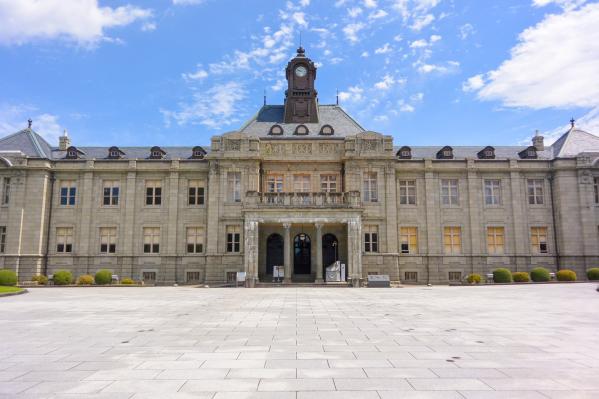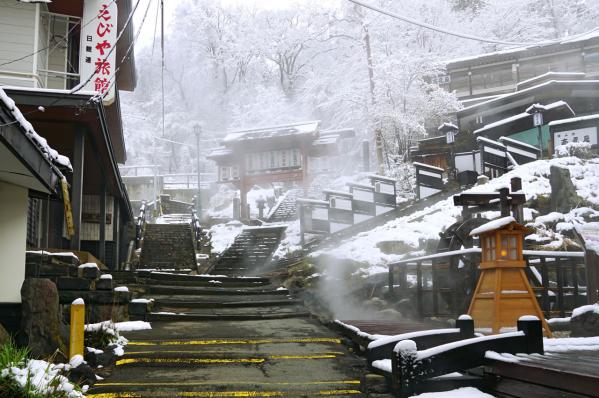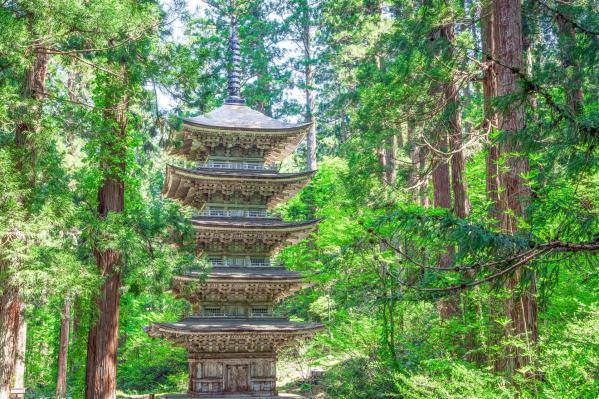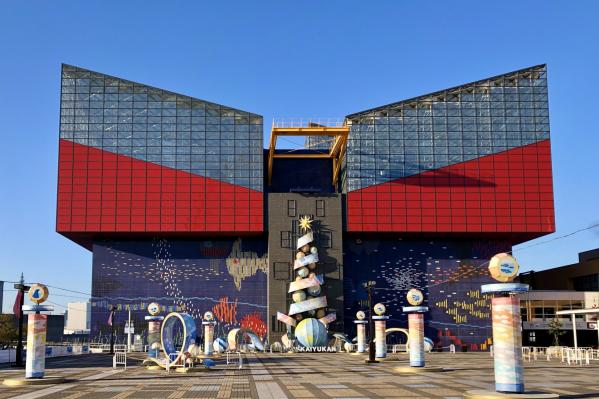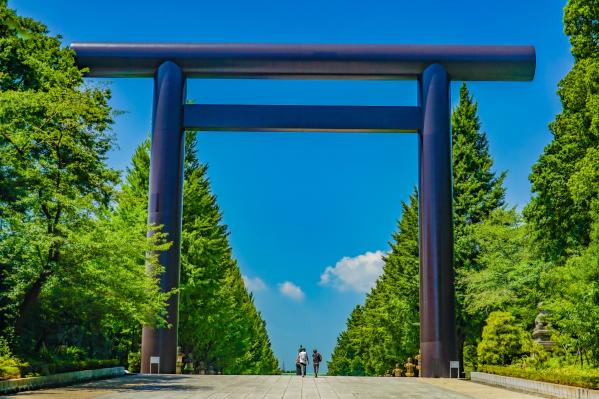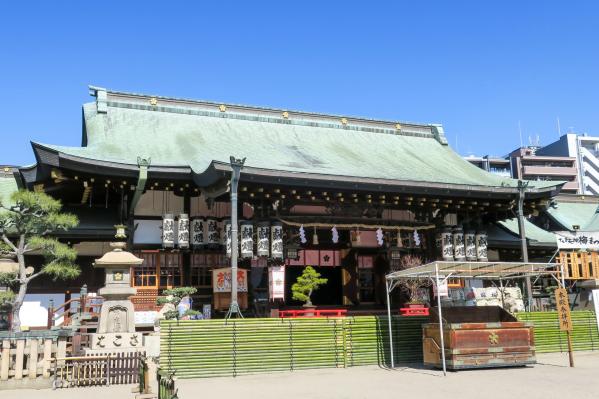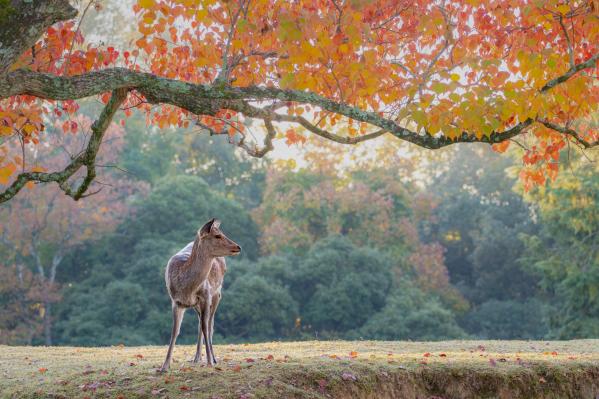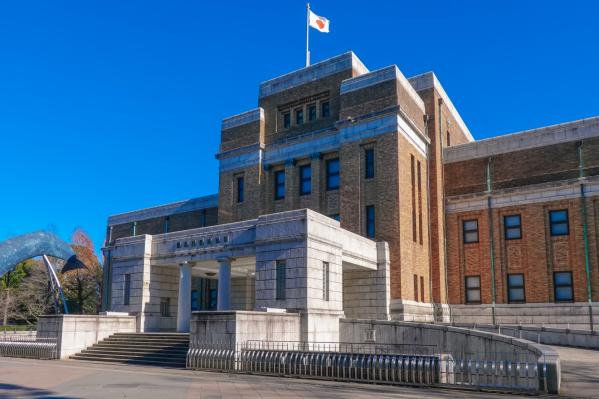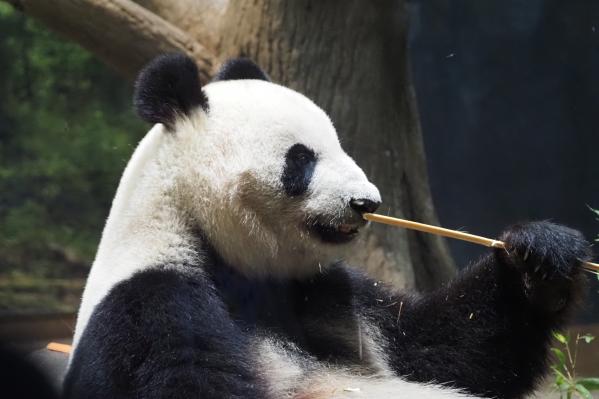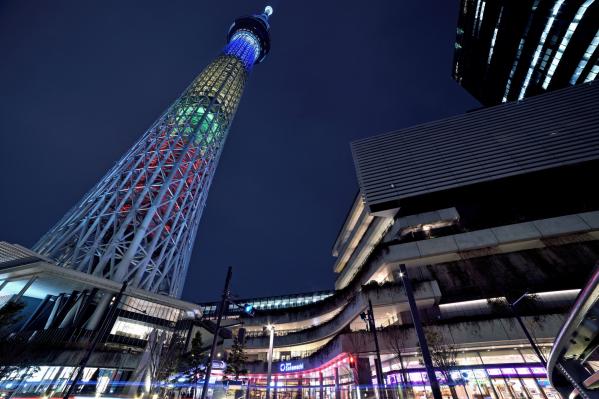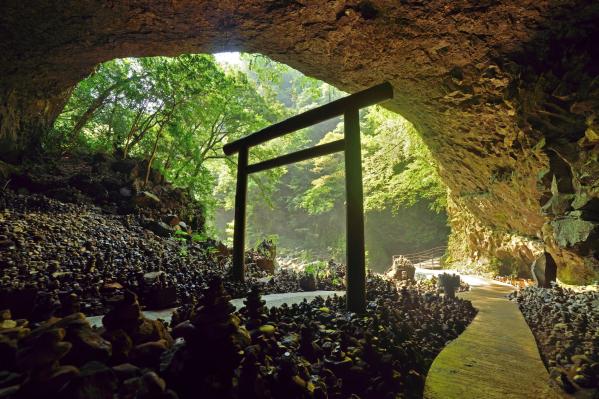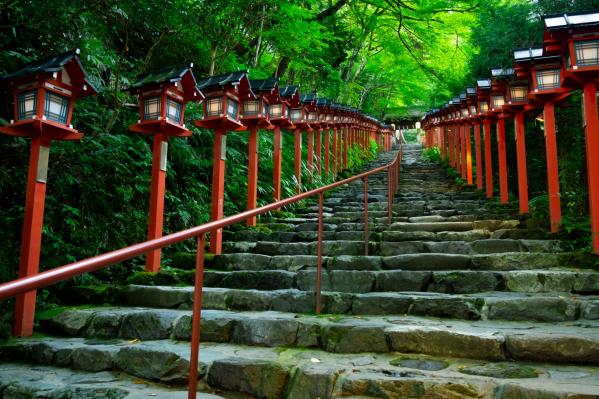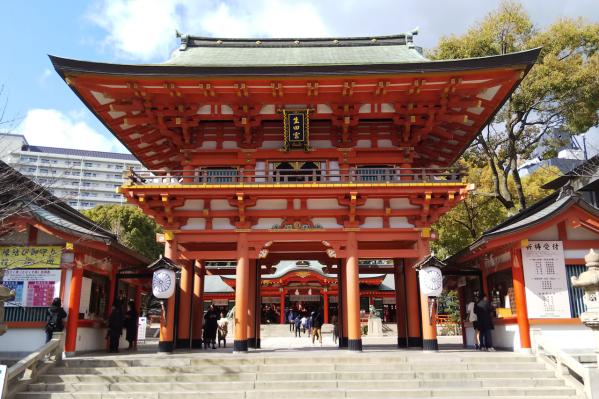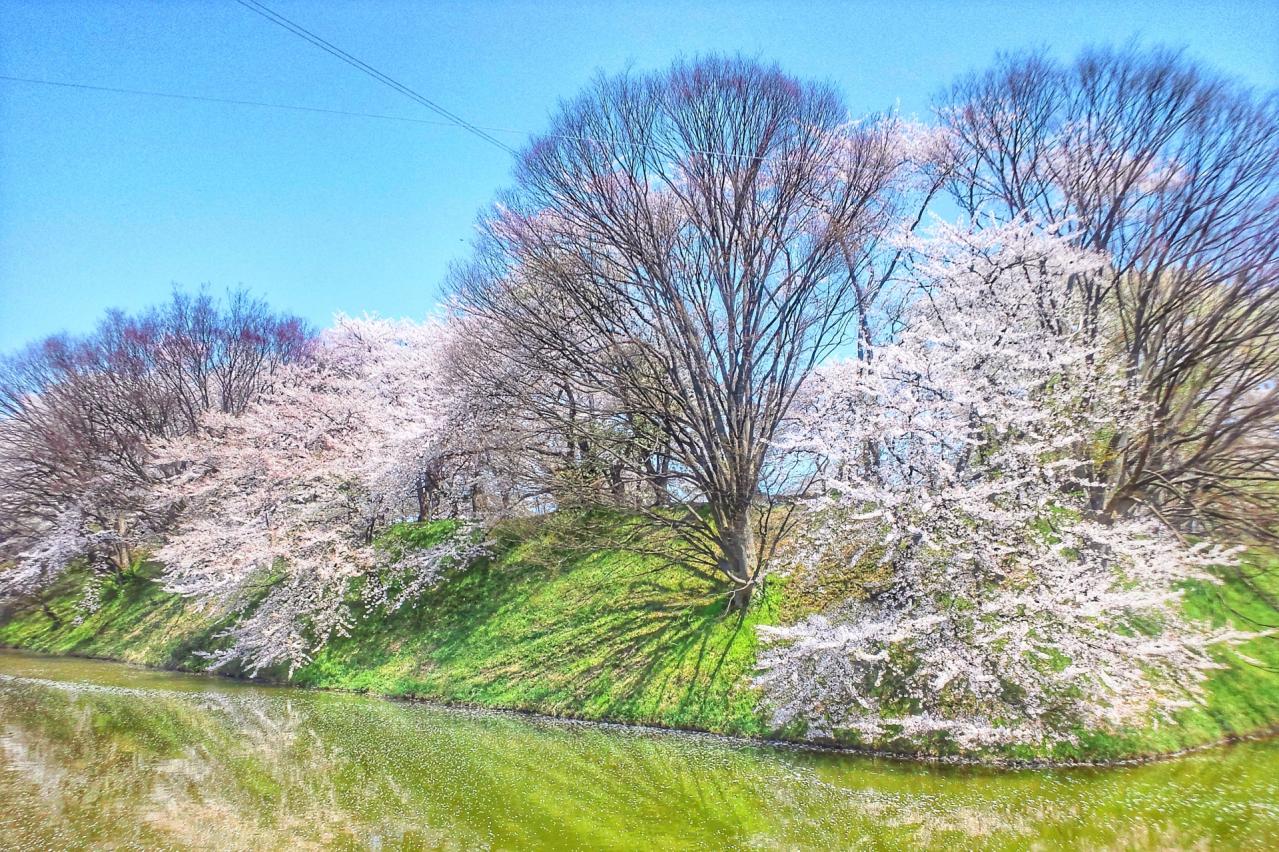
Kajo Park
Basic Information
- Spot Name
- Kajo Park
- Location
- 〒990-0826 1-7 Kajōmachi, Yamagata City, Yamagata Prefecture
- Access
- 10 minutes on foot from JR Yamagata Station.
- Parking
- Parking available for 230 cars.
- Business Hours
- From 5:00 AM to 10:00 PM (April 1st to October 31st)
From 5:30 AM to 10:00 PM (November 1st to March 31st) - Regular Holiday
- Open year-round.
- Fees
- Admission fee: Free
- Contact Information
- Phone Number:023-641-1212
- Official Website
Map
Detailed Information
Kajo Park is a vast urban park, covering approximately 35.9 hectares in the center of Yamagata City, which has been developed around the ruins of Yamagata Castle. The origin of Yamagata Castle dates back to 1356, when Shiba Kaneyori, the first lord of the Mogami clan, built the castle after entering Yamagata as the regional governor of Ushu. Later, the 11th lord, Mogami Yoshimitsu (1546-1614), expanded and improved the castle into a large flat castle surrounded by triple moats and earthworks, forming the prototype of the current castle structure. Yamagata Castle is one of the largest "contoured flat castles" in Japan and flourished as a political, economic, and cultural center of the Tohoku region during its time.
During the Keicho Dewa War (1600, the Battle of Hasedo), it served as the base for Lord Yoshimitsu in preparation for the Uesugi army led by Naoe Kanetsugu. It is said that the castle became known as "Kajo" because it was obscured by mist during the battle. Lord Yoshimitsu emerged victorious during the Warring States period and developed Yamagata into a territory of 620,000 koku, and in honor of his accomplishments, a magnificent equestrian statue was erected within the park. This statue represents Lord Yoshimitsu valiantly leading his troops into battle at the Battle of Hasedo.
In the early Edo period, after the Mogami clan was disbanded, Tadamasa Torii took over and improved the moats, earthworks, and stone walls. Although it continued to function as the center of the domain administration, it was abandoned after the Meiji Restoration, and many buildings were lost. After World War II, the castle ruins were opened to the public as a place for citizens to relax, becoming Kajo Park, which continues to be loved by residents and tourists to this day.
In 1986, Kajo Park was designated as a historical site by the national government, and in 2006, it was selected as one of the "100 Famous Castles of Japan." In recent years, excavations and restoration work have progressed, with the restoration of the Ninomaru East Main Gate in 1991 and the Honmaru Ichimonji Main Bridge in 2005. This has gradually restored the grandeur of the castle's fortifications, creating a landscape that evokes its former appearance.
The park is also home to several cultural facilities, including the "Yamagata City Local Museum (Former Zaisekan Main Building)," which is a mock Western-style hospital building constructed in 1878 that was relocated and restored in 1969, the "Yamagata Prefectural Museum," which introduces the nature and history of Yamagata, the "Yamagata Museum of Art," where visitors can appreciate artistic works, and the "Mogami Yoshimitsu History Museum," which exhibits materials related to Lord Mogami and the Warring States period. These locations serve as excellent hubs for learning about history and culture.
Additionally, Kajo Park is known as one of the premier cherry blossom viewing spots in Yamagata City. Approximately 1,500 cherry trees are planted within the park, and in spring, the "Kajo Cherry Blossom Viewing Festival" takes place. The cherry blossoms that bloom along the moats are illuminated at night, creating a magical reflection on the water surface. The blossoms against the backdrop of the moats and earthworks are picturesque, enchanting visitors. During the cherry blossom season, train services slow down to allow passengers to enjoy the view from the windows.
The park also showcases the beauty of the changing seasons, with cherry blossoms in spring, lush greenery in summer, autumn leaves, and snowy landscapes in winter, offering a stunning blend of the castle ruins and nature. The park features walking paths and is utilized as a space for bird watching and relaxation for citizens as well.
Kajo Park is a valuable historic site that conveys the history of Yamagata Castle, which was expanded and developed by the Warring States lord Mogami Yoshimitsu, and it is also a tourist and educational destination where cultural facilities and nature are harmoniously integrated. If you visit Yamagata, I highly recommend taking the time to explore this park, where you can experience both the weight of history and the beauty of the seasons.
Kajo Park Movies
Yamagata Tourist Attractions
View ListSake Brewery Museum Toko's Brewery
The "Sake Brewing Museum Tokko no Sakagura" in Yonezawa City is located in an environment well-suited for sake brewing, blessed with abundant water and high-quality ...
Takahata Winery
Takabatake Winery is located in Takabatake Town, Yamagata Prefecture, and is a representative brewing region in Tohoku. Takabatake Town boasts the largest shipment v...
Uesugi Shrine
The Uesugi Shrine, established at the ruins of Yonezawa Castle, enshrines Uesugi Kenshin, regarded as the strongest warlord of the Sengoku period. It is known as a p...
Mogami Gorge Basho Line Tour (Mogami River Boat Ride)
The Mogami River in Yamagata Prefecture offers the "Mogamigawa Basho Line Boat Ride," where you can enjoy seasonal scenery throughout the year. This boat ride, like ...
Kamo Aquarium
Located in Tsuruoka City, Yamagata Prefecture, "Kamo Aquarium" is an impressive aquarium housed in a modern white-walled building along the Sea of Japan. This aquari...
Yamagata Prefectural Museum "Bunsokan"
The Yamagata Prefectural Museum, known as Buntokan, is a building constructed in the style of British Neo-Renaissance in 1916. Until 1975, it served as the center of...
Mount Haguro Five-story Pagoda
The Haguro Five-Story Pagoda is a historic structure considered to be the oldest in the Tohoku region, located at the entrance to the "Ichi no Saka" on the approach ...








